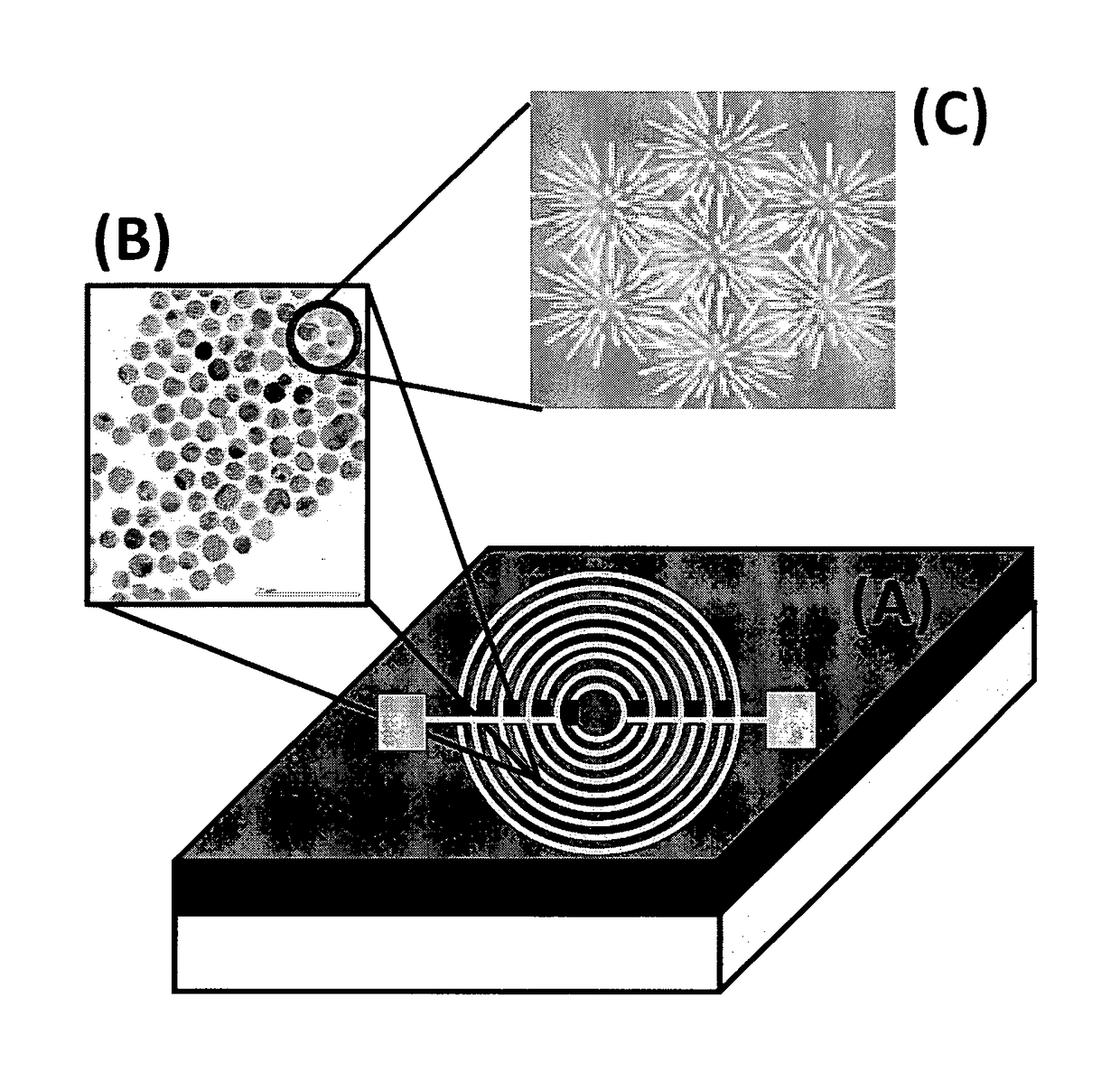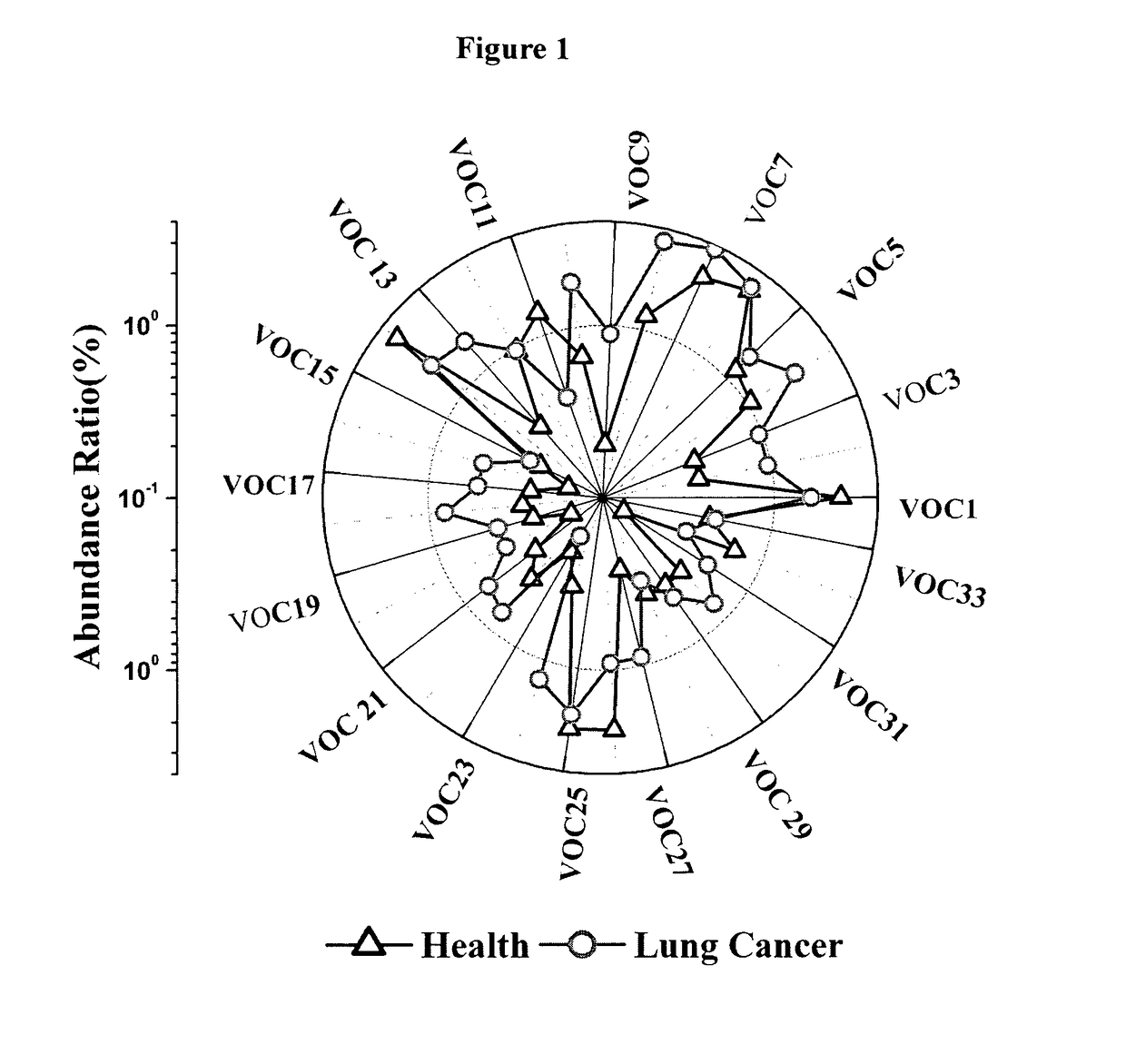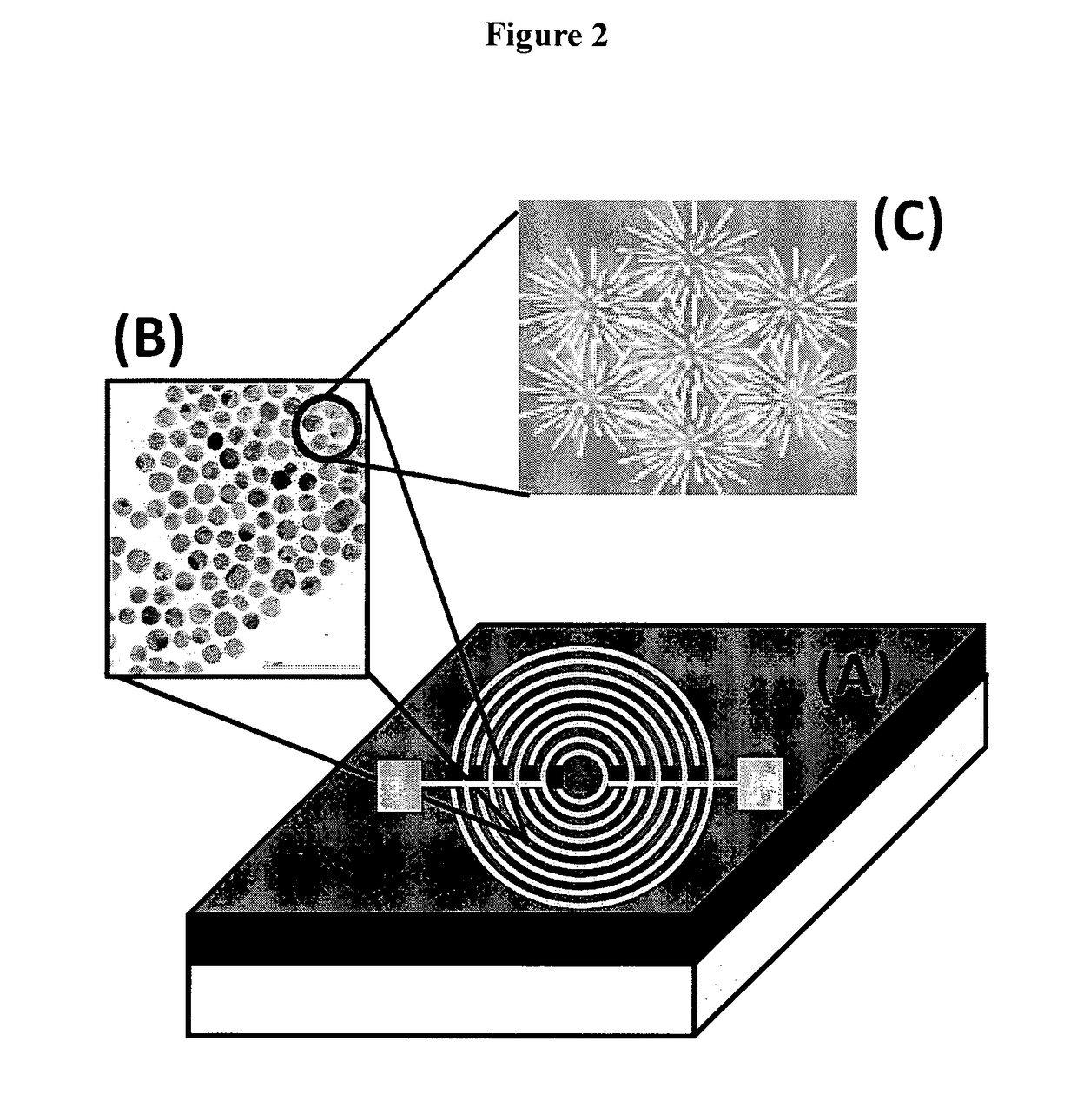Detection of cancer through breath comprising a sensor array comprising capped conductive nanoparticles
a technology of conductive nanoparticles and sensors, which is applied in the field of breath analyzers, can solve the problems that disclosures have not provided the accuracy or consistency required for clinical use, and achieve the effects of enhancing sensitivities for detecting, enhancing the efficacy of electron transfer, and improving signal-to-noise ratios
- Summary
- Abstract
- Description
- Claims
- Application Information
AI Technical Summary
Benefits of technology
Problems solved by technology
Method used
Image
Examples
example 1
n of Exhaled Breath
[0121]After deep exhaling, subjects inhaled to total lung capacity through mouthpiece that contained a cartridge on the aspiratory port, in order to remove more than 99.99% of VOC ambient contaminants from inhaled air during inspiration. Subjects then exhaled against 10-15 cm of H2O pressure to ensure closure of the vellum to exclude nasal entrainment of gas. Exhaled gas was collected through a separate exhalation port of the mouthpiece in a non-reactive Mylar gas-sampling bag (purchased from Eco Medics), which was previously cleaned with N2 gas. At least five analyses were performed on the exhaled breath of each subject. A total of 90 breath samples wherein 26 were obtained from healthy individuals and 64 were obtained from lung cancer patients, was used. The patients were previously clinically diagnosed using various diagnostic methods including bronchoscope biopsy, computed tomography (CT) scan and pulmonary puncture. None of the lung cancer patients had receiv...
example 2
of Exhaled Breath by GC-MS
[0122]Exhaled breath samples from subjects with lung cancer and from healthy individuals were collected in Mylar sample bags and analyzed with gas chromatography-mass spectroscopy (GC-MS) combined with solid phase microextraction (SPME). The SPME technique is used for pre-concentrating VOCs in the breath samples. A manual SPME holder with an extraction fiber coated with: 1) Polydimethylsiloxane (PDMS), 2) Polydimethylsiloxane-Divinylbenzene (PDMS / DVB), or 3) Polydimethylsiloxane-Carboxen (PDMS / Carboxen) (purchased from Sigma-Aldrich) was inserted into the Mylar bag. Between 500 and 1,000 cm3 of each breath sample was concentrated via the SPME method with extraction period of 2 hours, and delivered to GC-MS using a manual SPME holder. The extracted fiber in the manual SPME holder was inserted into GC injector which operated using the splitless model. The oven temperature profile was: 60° C., 2 min, 8° C. / min to 100° C., 15° C. / min to 120° C., 8° C. / min to 18...
example 3
and Capping of Gold Nanoparticles
[0126]Gold nanoparticles having average size of about 5 nm were capped with a variety of alkanethiolates having chain lengths of C4-C18 and ω-functionalized alkanethiolate (e.g. 11-mercapto-1-unedecanol). Gold nanoparticles were synthesized using the standard two-phase method according to Brust et al. (J. Chem. Soc., Chem. Corn., 801, 1994, 2), with some modifications according to Hostetler et al. (Langmuir, 1998, 14, 24). Briefly, AuCl4− was first transferred from aqueous HAuCl4.xH2O solution (25 ml, 31.5 mM) to a toluene solution by the phase-transfer reagent TOAB (80 ml, 34.3 mM). After the organic phase was isolated, excess of the thiols was then added to the solution. The mole ratio of thiol:HAuCl4.xH2O was varied between 1:1 and 10:1 depending on kind of thiol, in order to prepare monodispersed solution of gold nanoparticles in average size of 5 nm. For example, mole ratios of thiol:Au were 10:1 and 1:1 for dodecanethiol and butanethiol-capped ...
PUM
| Property | Measurement | Unit |
|---|---|---|
| thickness | aaaaa | aaaaa |
| particle size distribution | aaaaa | aaaaa |
| particle size distribution | aaaaa | aaaaa |
Abstract
Description
Claims
Application Information
 Login to View More
Login to View More - R&D
- Intellectual Property
- Life Sciences
- Materials
- Tech Scout
- Unparalleled Data Quality
- Higher Quality Content
- 60% Fewer Hallucinations
Browse by: Latest US Patents, China's latest patents, Technical Efficacy Thesaurus, Application Domain, Technology Topic, Popular Technical Reports.
© 2025 PatSnap. All rights reserved.Legal|Privacy policy|Modern Slavery Act Transparency Statement|Sitemap|About US| Contact US: help@patsnap.com



